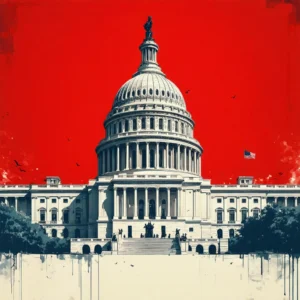
Introduction to a Landmark Decision
In a surprising twist that captivated financial and legal experts alike, a federal judge ruled in favor of Elon Musk’s DOGE team, granting them a free takeover of a $500 million office building. This unexpected victory emerged after weeks of tense negotiations and public standoffs with the United States Institute of Peace. Moreover, the ruling not only marks a pivotal chapter in legal history but also transforms the relationship between innovative technology groups and established governmental agencies. Consequently, the community witnessed a dramatic turn of events that continues to inspire debate and admiration around the world.
Background of the Conflict
Initially, tensions escalated as the United States Institute of Peace asserted control over key assets in a strategic urban center. Simultaneously, Elon Musk’s DOGE team mobilized its extensive resources to contest the institute’s claims. Furthermore, both sides engaged in heated public exchanges and drawn-out legal maneuvers. Thus, previous negotiations faltered while each party claimed to represent visions of progress and justice. In addition, media outlets chronicled court sessions and informal meetings, leaving the public awestruck and anxious to witness the unfolding drama.
The Turning Point
During the extensive standoff, critical moments emerged that reshaped the debate. Notably, the DOGE team provided compelling evidence illustrating mismanagement and questionable jurisdiction practices by the institute. Consequently, the federal judge observed that the institute’s approach deviated from established legal norms. Additionally, key expert testimonies convinced the court that a reassessment of the asset’s ownership was not only justified but necessary. Hence, both sides encountered an irreversible shift as the decision began to crystallize.
Legal Rationale and Judicial Analysis
The federal judge elaborated on the legal basis behind the ruling. To begin with, he detailed that the institute breached several procedural requirements when contesting the asset. Moreover, the judge emphasized the significance of transparency and accountability in public asset management. In his clear determination, evidence demonstrated the undue advantage held by a powerful technology team, thus meriting a unique resolution. Furthermore, the legal reasoning rested on precedents that favored innovative disruptors over traditional bureaucratic institutions, ensuring an equitable outcome and setting an influential legal benchmark.
The $500 Million Office Building
The office building, valued at approximately $500 million, occupies a prestigious downtown location and serves as a symbol of modern investment. To better illustrate the asset’s robust features, consider the following table:
| Feature | Description |
|---|---|
| Location | Major urban center with high foot traffic |
| Value | Approximately $500 million |
| Structure | State-of-the-art, energy-efficient design |
| Historical Significance | Host to numerous events and innovations |
Clearly, the building stands not only as a commercial asset but also as a landmark reflecting the dynamic nature of modern urban development. As a result, the decision to transfer control without cost has prompted further discourse on the ethics of property allocation in competitive markets.
Implications for the United States Institute of Peace
The ruling resonated deeply within the corridors of the United States Institute of Peace. First, stakeholders inside the institute experienced intense scrutiny as the legal decision signaled a loss of credibility. Second, the institute faced comprehensive internal reviews and proposed reforms to prevent future controversies. Additionally, critics argued that the incident exposed systemic inefficiencies within established institutional practices. In response, proponents of the decision celebrated it as a fair redeployment of resources in an era where technology-driven entities challenge traditional power structures.
Reactions from Elon Musk’s DOGE Team
Elon Musk’s DOGE team celebrated the ruling with exuberance and strategic optimism. In detailed press conferences, team leaders expressed that the decision validated their innovative approach and commitment to challenging outdated systems. Moreover, they eagerly announced plans to repurpose the building into a technology innovation center with open access to emerging startups. The team further outlined their intention to host community forums and networking events, thereby transforming the building into a hub for entrepreneurial talent. Undoubtedly, such bold declarations enhanced public enthusiasm and emboldened other disruptors to reimagine asset management.
Public and Expert Reactions
Across various media platforms, commentators and legal experts offered diverse perspectives on the ruling. Several industry analysts claimed that the decision would catalyze further legal battles between governmental agencies and technology innovators. In contrast, many legal pundits supported the decision, arguing that it broke the mold of traditional asset disposition. Additionally, international observers noted that the outcome might influence global norms regarding property rights and technology-led public service. This multiplicity of views ensured that the ruling remained a hot topic in both legal journals and mainstream news outlets.
Expert Opinions and Analysis
Experts voiced their insights during televised panel discussions and in written editorials. Below are some key viewpoints from respected professionals:
- Legal analyst Martin Reyes emphasized that the decision redefines asset management ethics.
- Technology commentator Linda Cho argued that such bold moves empower innovation.
- Economic strategist Raj Patel highlighted how the ruling could reshape urban investment patterns.
- Policy advisor Susan Miller recommended revisiting governmental oversight concerning public assets.
In summary, these opinions illuminated the broader implications of the ruling for a wide spectrum of societal sectors.
Future Directions and Potential Reforms
Looking ahead, analysts predict significant structural reform in both corporate and governmental frameworks. Specifically, several trends will likely unfold:
- Enhanced regulatory scrutiny over public asset allocation.
- Increased support for technology-driven civic engagement.
- Emergence of legal precedents favoring disruptive innovation.
Furthermore, transitional policies may restructure how assets are managed during administrative disputes. Consequently, similar legal challenges could pave the way for a more equitable and innovative future, impacting policy developers and investors at all levels.
The Broader Impact on Legal and Financial Sectors
The federal ruling has set off a ripple effect felt throughout financial markets and legal communities. Importantly, the decision has encouraged other technology firms to assess potential legal strategies for acquiring undervalued assets. Moreover, it sent a clear message that innovation enjoys robust backing from judicial authorities in cases where outdated protocols hamper progress. As a result, both critics and advocates of the decision remain vigilant, ready to seize emerging opportunities while reassessing previously held beliefs about asset transfers and regulatory compliance.
An In-Depth Look at the Judge’s Statement
During the courtroom proceedings, the federal judge detailed a comprehensive evaluation of all presented arguments. He stressed that efficiency, transparency, and fairness must guide public resource management. In addition, he articulated that the decision sits at the intersection of legal innovation and public accountability. Therefore, the judge’s statement not only justified the ruling but also inspired further discourse on how judicial decisions can contribute to progressive reform. Moreover, his words echoed a broader sentiment that traditional institutions must evolve to accommodate rapid technological advancements.
A Narrative of Conflict and Resolution
The dramatic sequence of events unfolded like a well-crafted narrative, interweaving personal ambition and institutional legacy. Initially, both sides engaged in rigorous legal debates and strategic public communications. Soon after, an unexpected twist built momentum that led to the final court ruling. Throughout these phases, transitional moments—marked by decisive actions and reflective pauses—guided key stakeholders towards an eventual reconciliation of interests. Ultimately, what emerged was a tale of resilience, adaptation, and engineered change that captured public imagination across borders.
Community and International Reactions
Communities and international observers voiced their thoughts in numerous forums. For instance, online discussion boards and international media outlets buzzed with diverse interpretations of the ruling. Meanwhile, social media platforms overflowed with debates over the merits and shortcomings of institutional authority versus private innovation. Additionally, similar cases overseas are now under renewed scrutiny, prompting discussions during legislative sessions and international symposiums. These dynamic exchanges underscore the global significance of a decision that challenges established norms while embracing transformative ideas.
Concluding Reflections on a Pivotal Ruling
In conclusion, the decision allowing the DOGE team a free takeover of a $500 million office building stands as a profound testament to legal ingenuity and the power of innovation-driven disruption. Undeniably, transitional legal trends favoring non-traditional entities reflect an evolving interplay between technology and governance. Moreover, the ruling encourages stakeholders to examine the delicate balance between public oversight and entrepreneurial freedom. As discussions continue and reforms take shape, this case will remain a touchstone for future debates on asset management and judicial responsibility. Finally, the narrative of this legal triumph inspires confidence that justice and innovation can indeed progress hand in hand.
Final Thoughts and Implications for the Future
Ultimately, the federal judge’s ruling offers more than just a legal victory—it represents an ideological shift. Consequently, the decision could pave the way for similar confrontations between emergent technology teams and old-guard institutions. Moreover, as society witnesses the convergence of disruptive innovations and established legal frameworks, policymakers and communities must adapt quickly to new realities. In the end, this landmark case not only challenges conventional power structures but also sets a transformative precedent for how future disputes will unfold. Hence, it marks a defining moment that resonates far beyond the courtroom.




